Toitanga
Bella Martin Ngā Mau Rākau o Atua Wāhine
-
Tauira / Student
Bella Martin -
Kaitautoko / Contributor
Alistair Fraser -
Kaiako / Lecturers
David Coventon, Katie Kerr
-
School
AUT Art + Design 2025
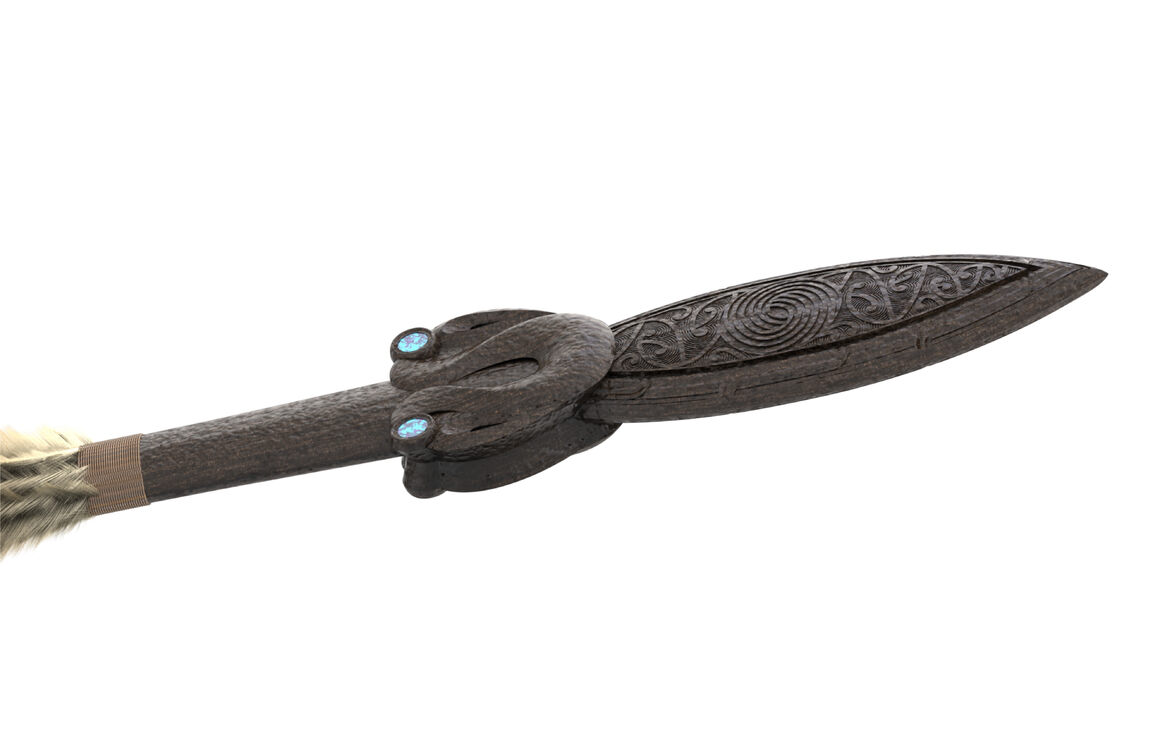

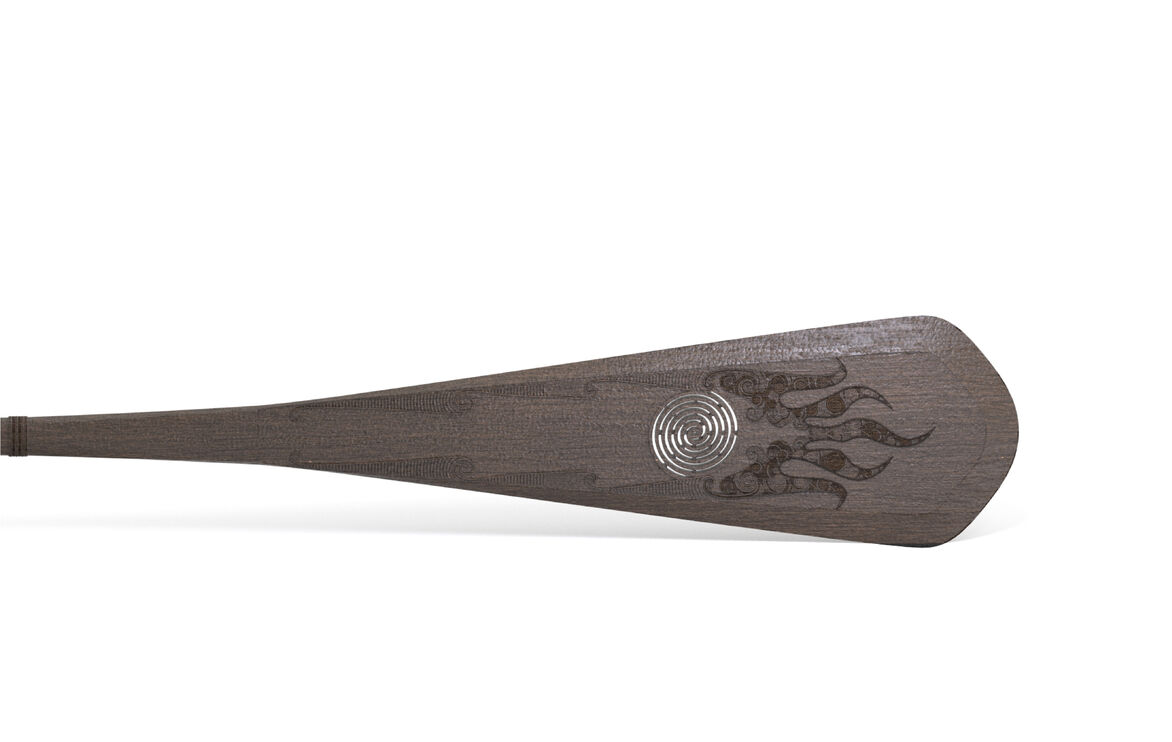
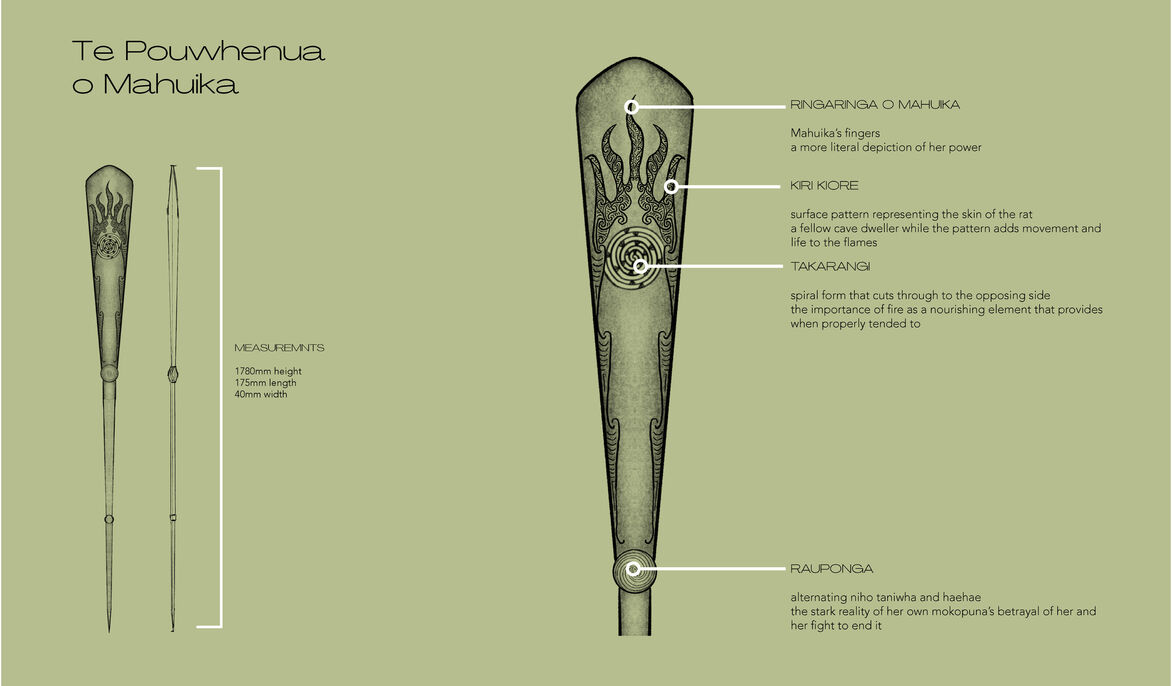
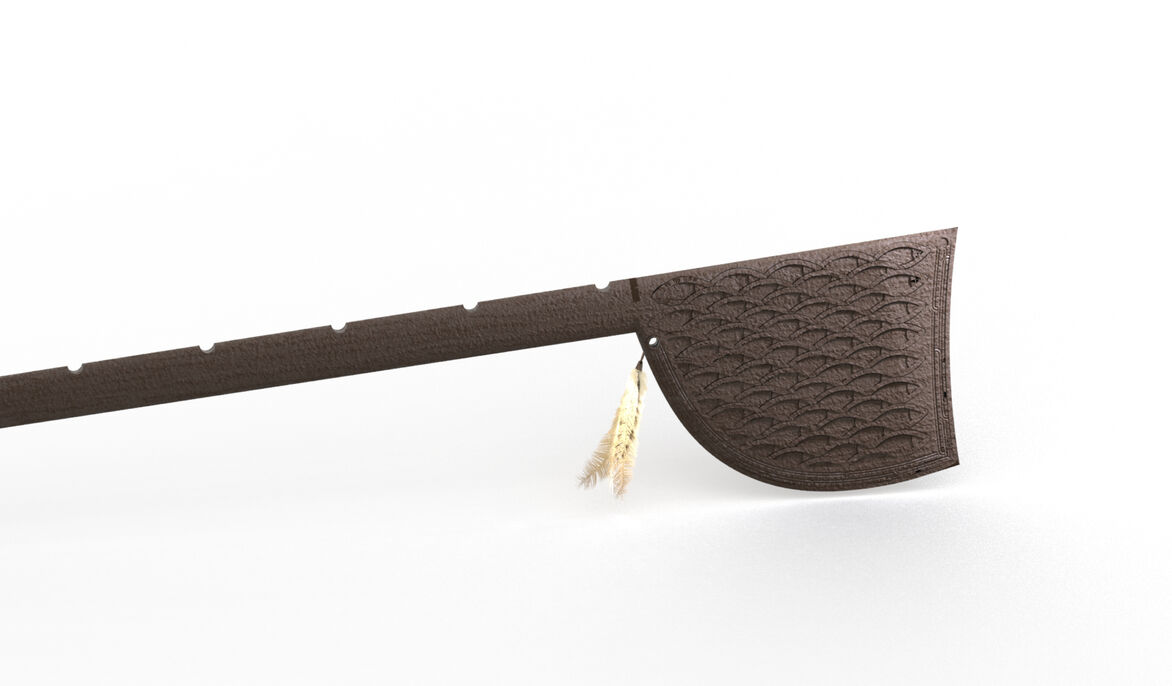
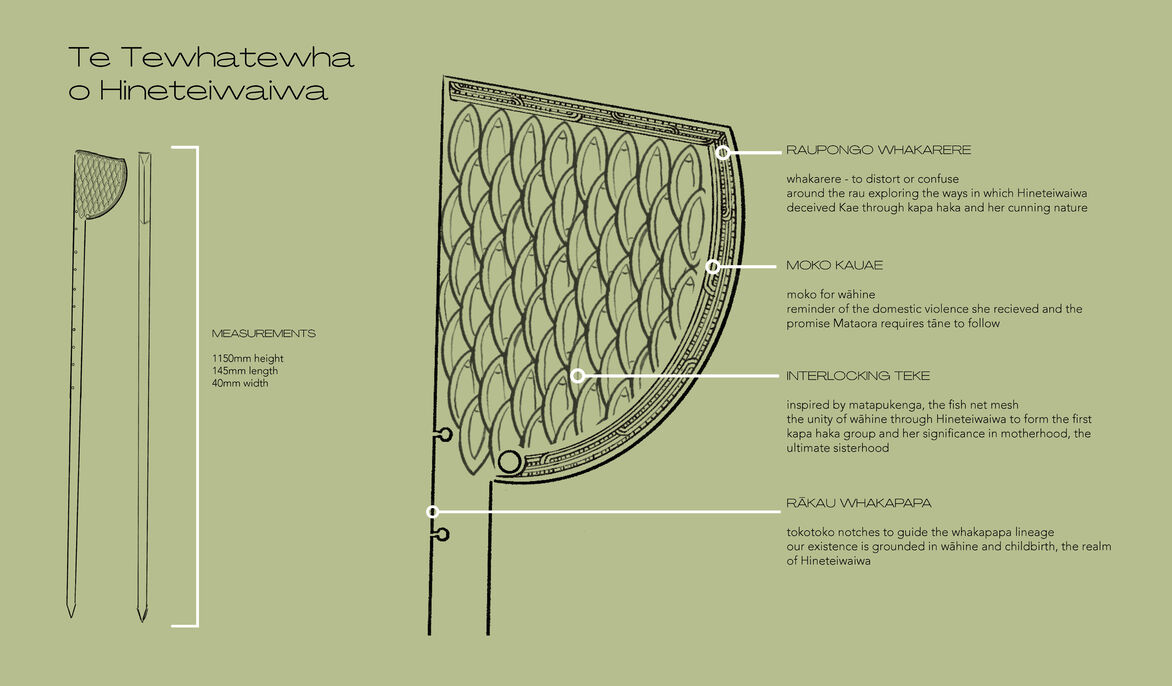
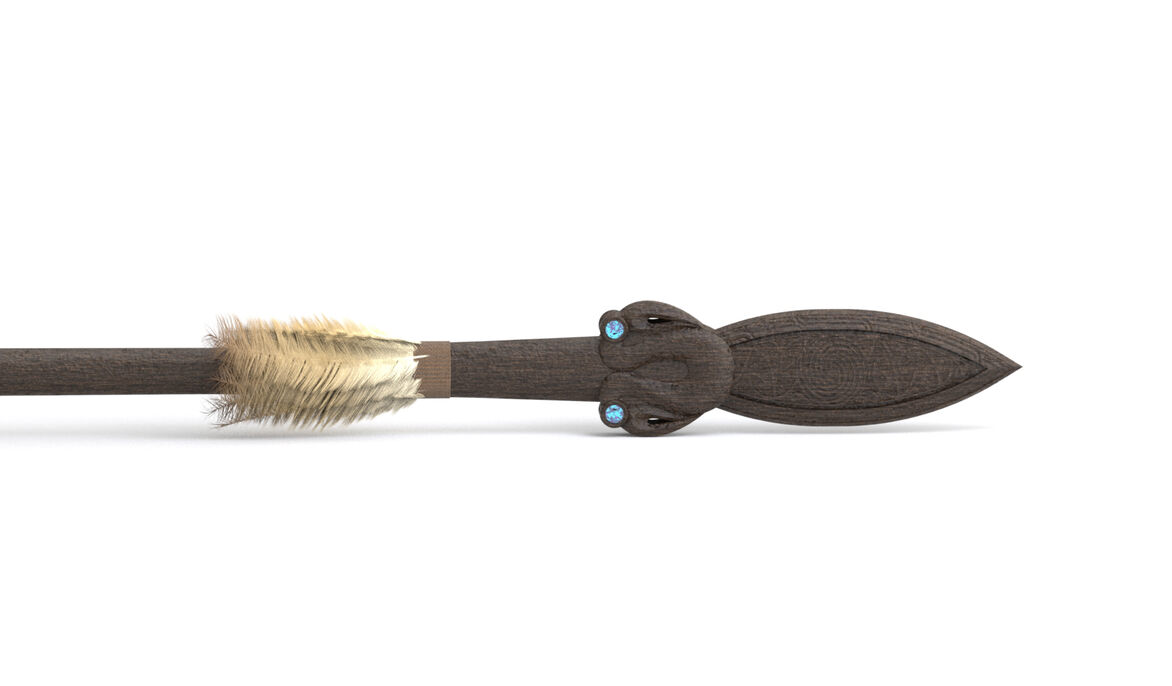
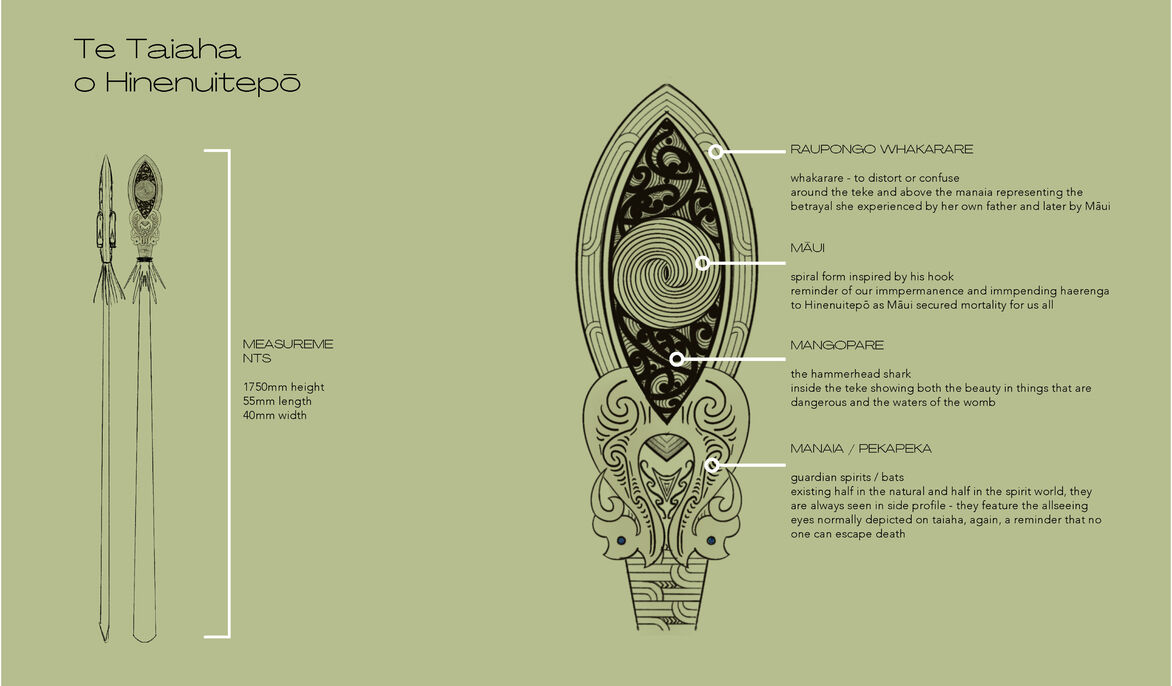
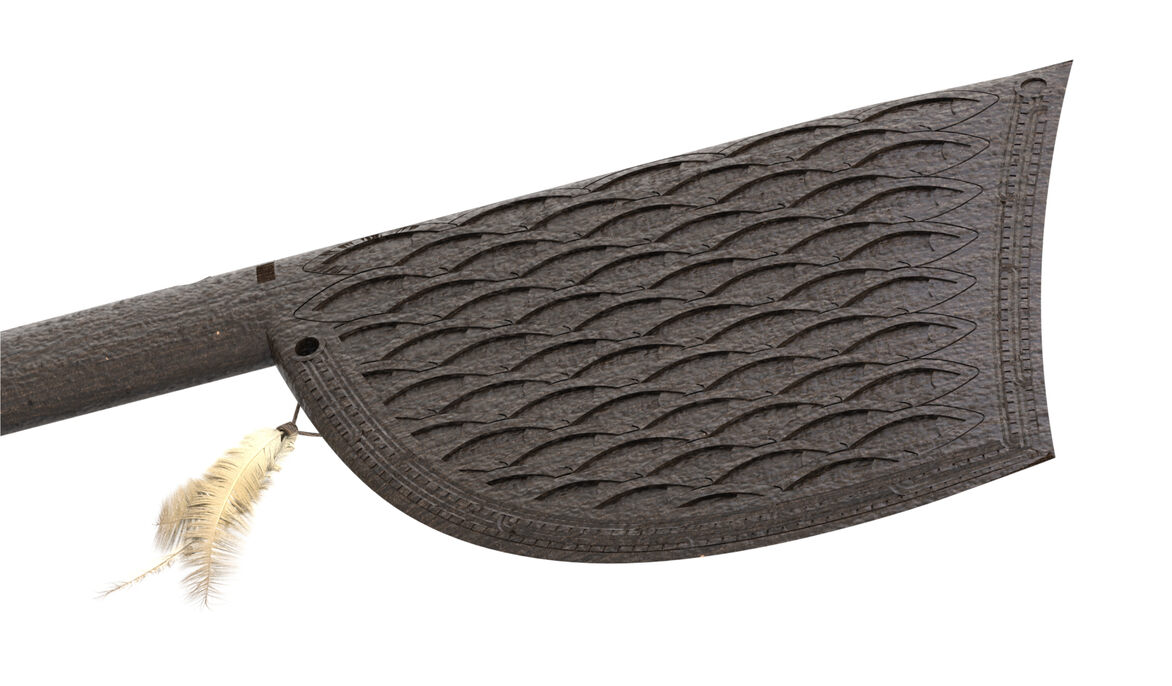
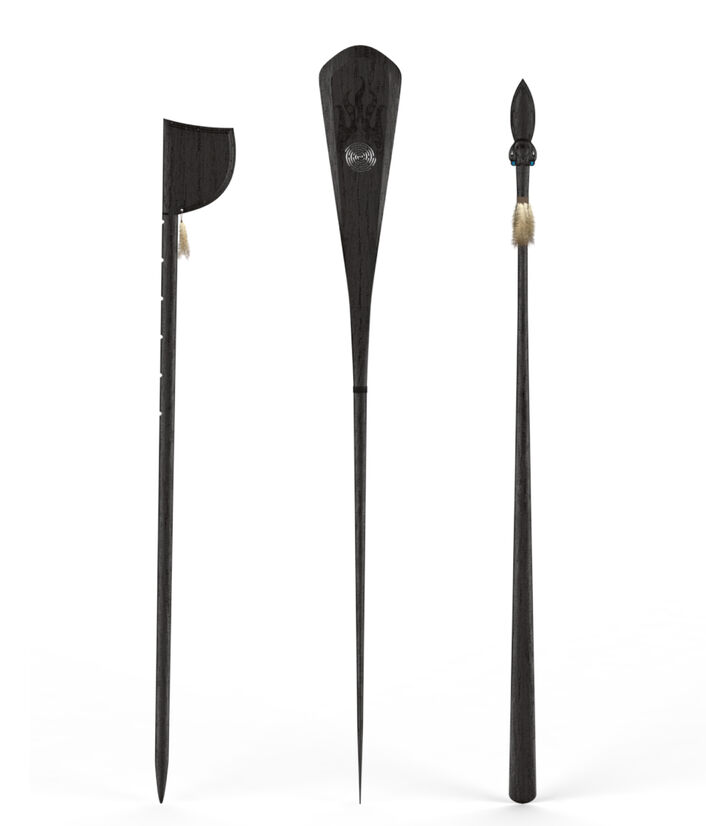
Description:
Ngā Mau Rākau o Atua Wāhine has been undertaken in an attempt to create something authentically Māori, māori Māori. The adjective māori means natural, authentic or original, giving rise to the description that Māori as tangata whenua, people of the land, use for themselves.
This haerenga has developed a personal practice founded in tikanga and mātauranga Māori resulting in three mau rākau — based on customary weapons — which tell the stories of some of our treasured atua wāhine.
Like many urban Māori, my journey to the reclamation of my culture is ongoing and, often, incredibly painful. Reflecting on the hardships of my tīpuna – their loss of land, language, identity and agency – has a profound impact on what I want to put out into the world.
Ngā Mau Rākau o Atua Wāhine serves to uplift Māori means of communication; oral history, pūrakau (narratives), whakairo (carving), and mau rākau (weaponry). What started as an exploration of the decolonised book quickly became the re-Indigenising of design communication - the recentering of Māori methods. Printed language and the imposition of English onto tamariki saw the loss of oral tradition as the art form it once was. This project takes the technology and systems that have come along with New Zealand’s colonisation to create space for and encourage oral tradition.
These pieces, designed to be CNC routed (a form of digital carving), showcase the pūrākau of the atua Mahuika, Hinenuitepō and Hineteiwaiwa. These women are strong forces that we still call to today in times of need. They remained fierce in the face of adversity and continue to teach and guide us. The taiaha, tewhatewha and pouwhenua designed for this project are weapons both physically and metaphorically. They reflect the violence experienced by these atua, their defences and the ways wāhine Māori continue to fight oppression today.
Tikanga has been a vital element of this mahi. It has graced and guided every step of this journey. For example, traditionally, wāhine don’t pick up the chisel for our ability to whakanoa - remove tapu (although this is iwi dependent). CNC routing was a workaround for this tikanga issue. In the early stages, I had planned on exploring the stories of 1800s mana wāhine. As these wāhine were not ones I whakapapa to, depicting them without the blessing of their whānau felt completely wrong. My implementation of tikanga has been informed through my experiences in schooling, kōrero with Māori, and personal research - a very incomplete idea of these principles. This project has been guided by mātauranga Māori at every stage and reflects the never-ending learning journey I am on.
Extract from ‘Kaua e ohooho’ composed and performed by Alistair Fraser. Audio courtesy of Alistair Fraser and RNZ. https://www.rnz.co.nz/national/programmes/nat-music/audio/201804104/alistair-fraser-whakakite-nga-taonga-puoro
Judge's comments:
A thoughtful and well realised project exploring how our stories can live and be expanded using the technologies and skills we now have access to.